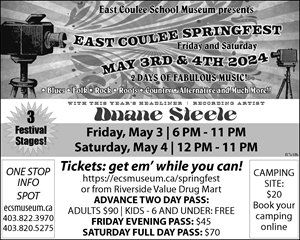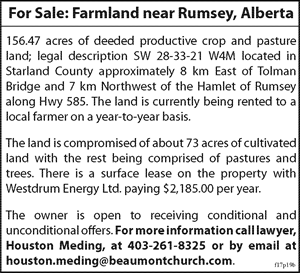
The Alberta Badlands are famous the world over for their abundance of fossils. From the miniscule fish, amphibians, and reptiles to the colossal dinosaurs.
Charged with unearthing these creatures are palaeontologists. However, many amateur fossil hunters have found some of the most amazing finds. For example, Black Beauty, the enormous Tyrannosaurus rex at the Royal Tyrrell Museum, was found by two young boys.
Here is some advice to help you hunt for Alberta’s prehistoric treasures.
First and foremost is to know what age and type of rock you are looking in. In the badlands the rocks are from the late Cretaceous. Also, fossil are found generally in sedimentary rocks, such as sandstone.
“You want to look in sedimentary rocks. The sandstones are usually the best,” said Dr. Don Henderson, curator of dinosaurs at the Tyrrell Museum.
Once you’ve found a suitable area, pack plenty of water, good shoes, camera, and if possible a GPS. Also, if it has rained within the past 12 hours, it is generally not safe to hike, due to the extremely slippery bentonite that covers the area.
From there, it helps to know what kinds of animals can be found in the area and to form a mental picture of what you’re looking for. Also, remain focused.
“Don’t let your mind wander. If you’re walking around and not paying attention, you’re going to miss stuff. You really have to think about what you’re looking at on the ground,” suggested Henderson.
If you find a bone, there are a few ways to determine if it is indeed a fossil. Fossils here are generally reddish brown in colour and are heavier due to being essentially turned to stone. Bones that are white and light will most likely be from a modern animal, such as a deer.
Once you find a fossil do not remove it from the ground. The temptation may be great, but it is best left to the professionals. Take a photo of the fossil with something for scale, take photos of the surroundings, mark the location on a map or GPS, and inform the Tyrrell Museum.
“If something looks significant, take a photo with something for scale next to it. Plus, there could be bits around what you’re looking at and even though fossils are heavy, they are extremely brittle. Think of them as being made from glass. If you drop them, they’re done. If you put even a little stress on them, they snap. They really are fragile,” said Henderson.
Excavating fossils anywhere in Alberta is illegal under the Alberta Historical Resources Act. The public is allowed to surface collect, meaning a fossil is resting on the ground. A scientific permit is needed to excavate.
Under the act, those caught excavating could face up to $50,000 in fines and/or one year in jail.
“The whole point of having the requirements, you need special training and expertise to safely remove a fossil from the ground. Our hope is significant fossils get preserved and collected professionally, so they’re available for display and scientific research,” said Dan Spivak, who is responsible for resource management with the Tyrrell Museum.
Also, collecting fossils on private land is prohibited without the landowners permission.
Collecting fossils in provincial or national parks, such as Midland Provincial Park (which is around the Tyrrell Museum) or Dinosaur Provincial Park is strictly forbidden.
While it may be disappointing that the public cannot excavate fossils, the goal of the act and palaeontologists is to preserve these amazing creatures as long as possible.
Plus, even if you only find the fossil, if it’s something new, it might be named after you.
If you find a fossil, visit www.tyrrellmuseum.com/contact_us or call 403-8230-7707.




























